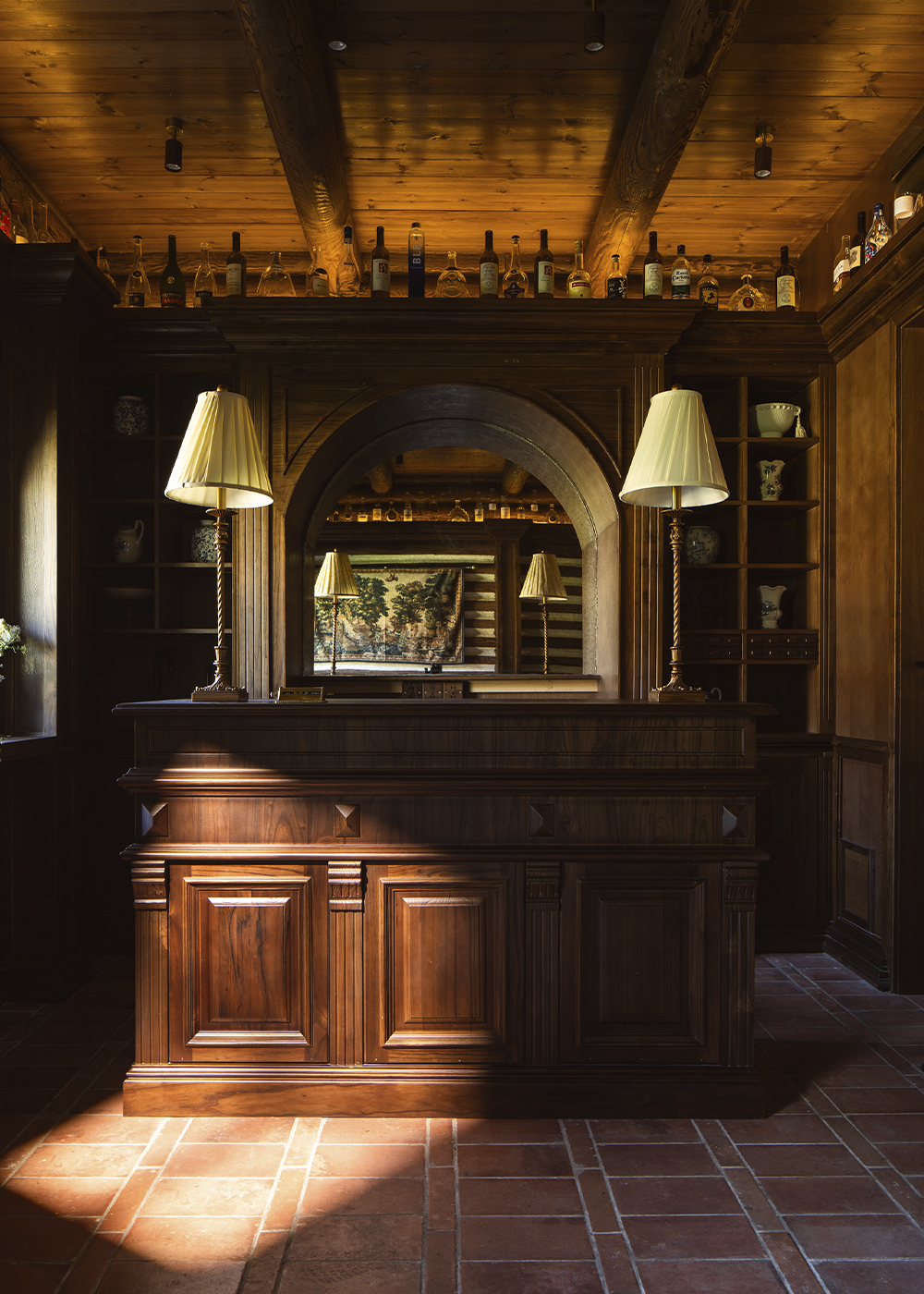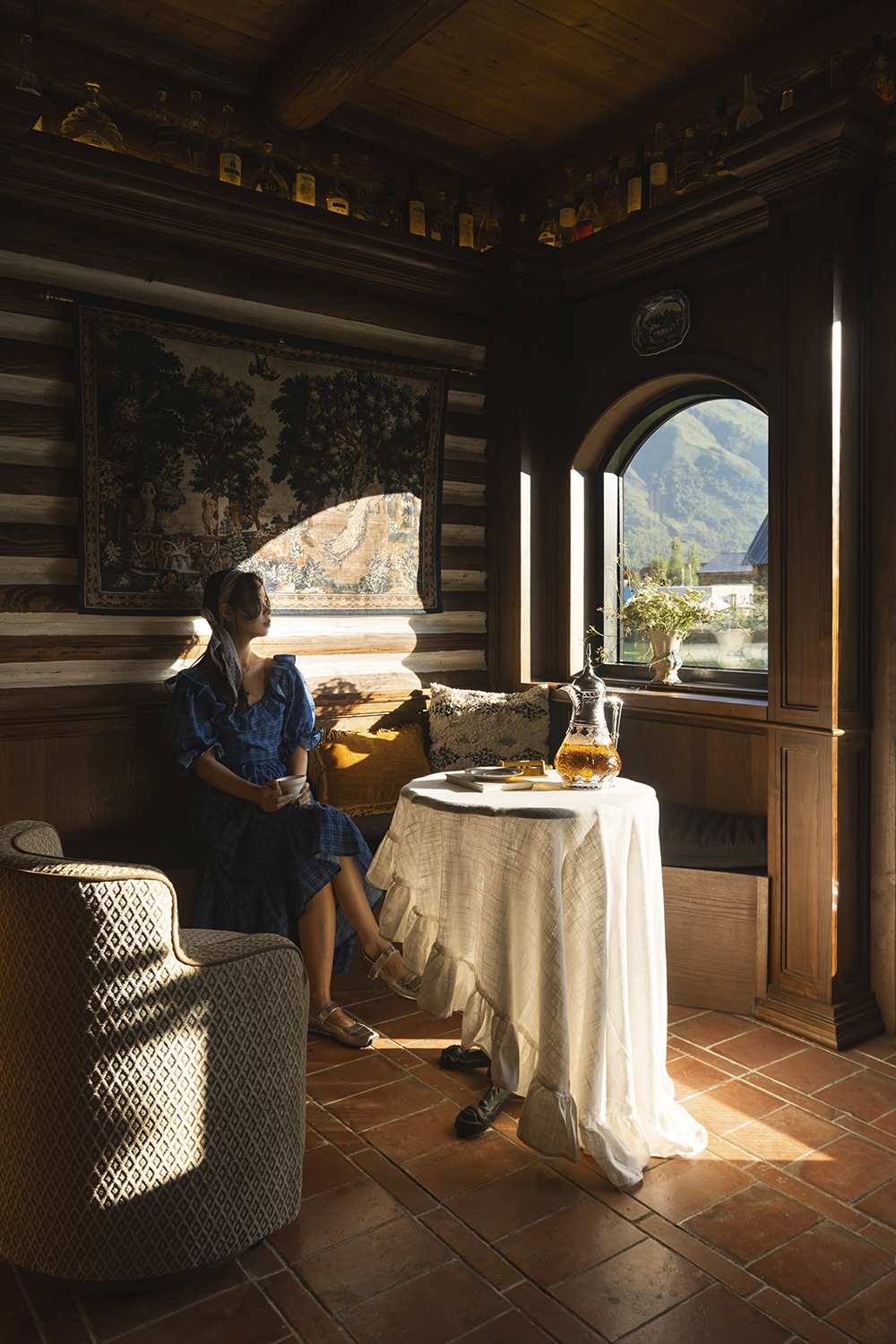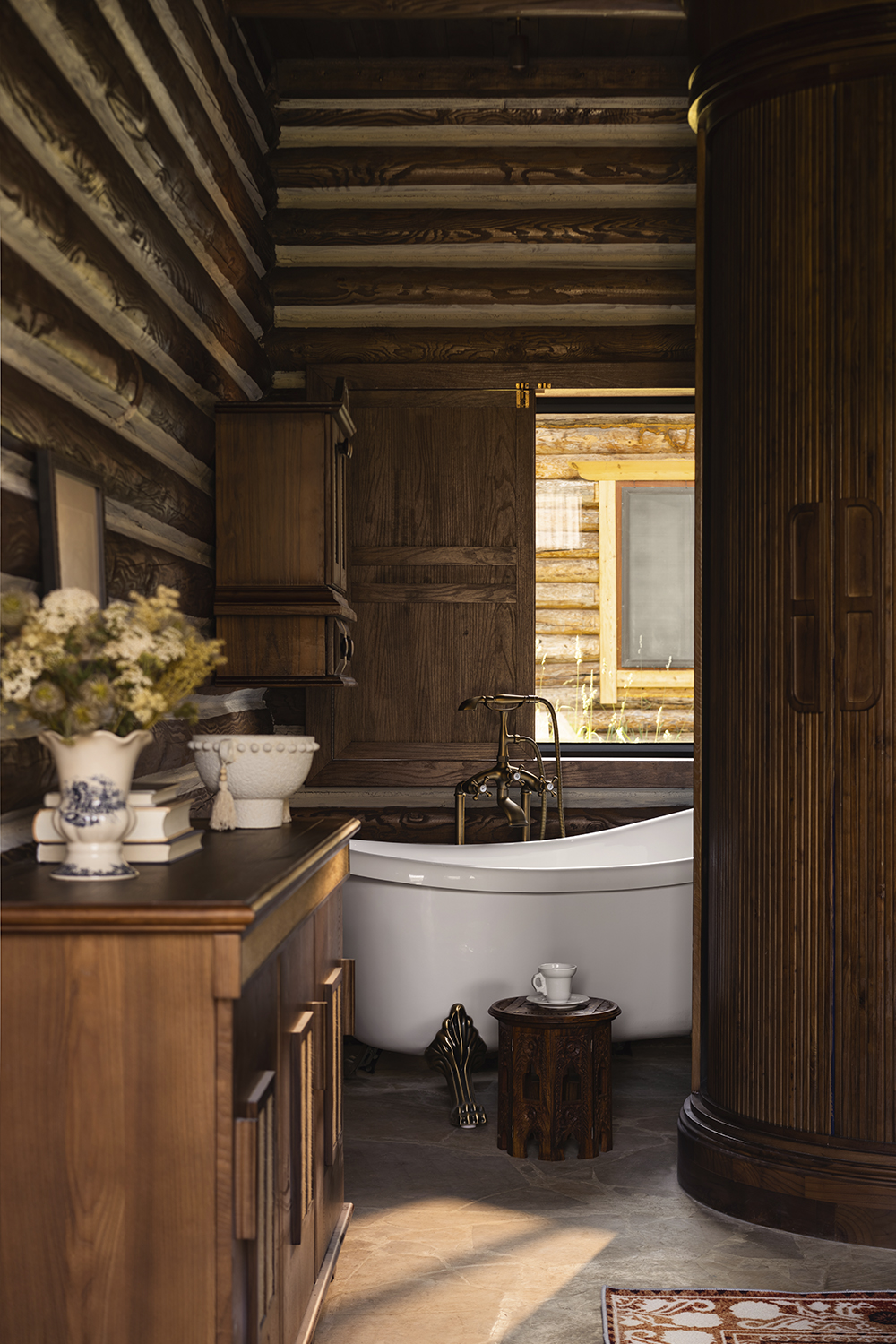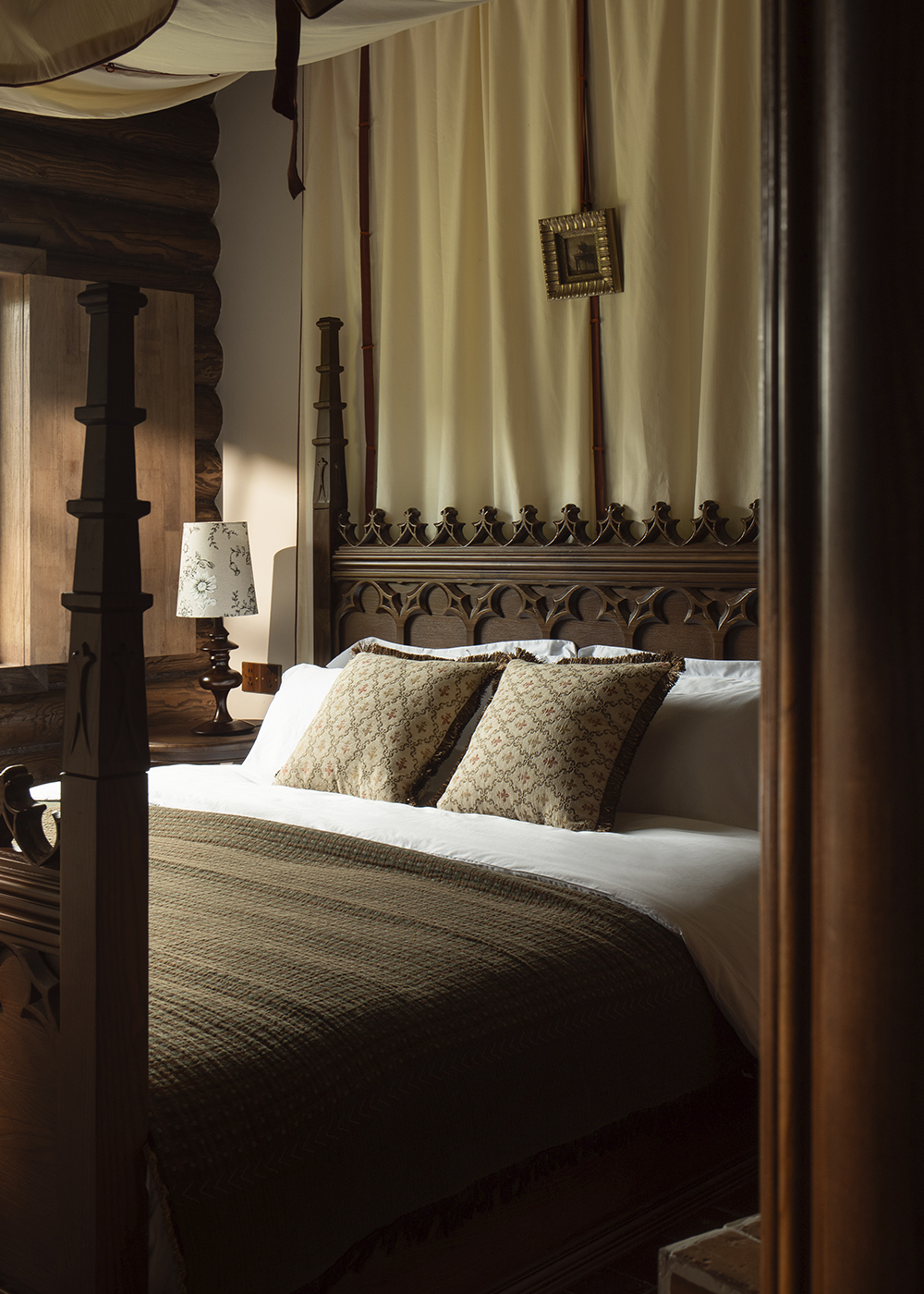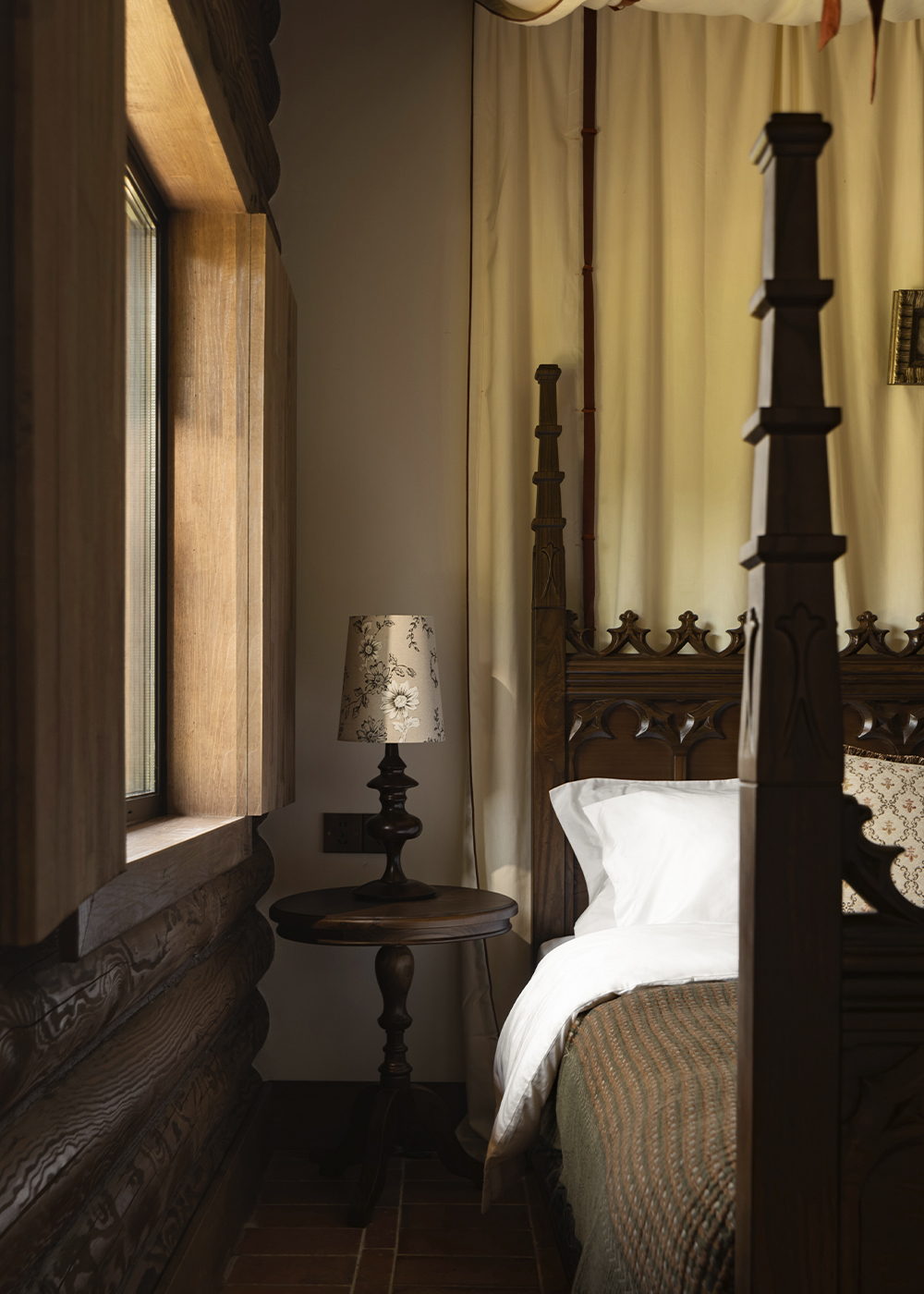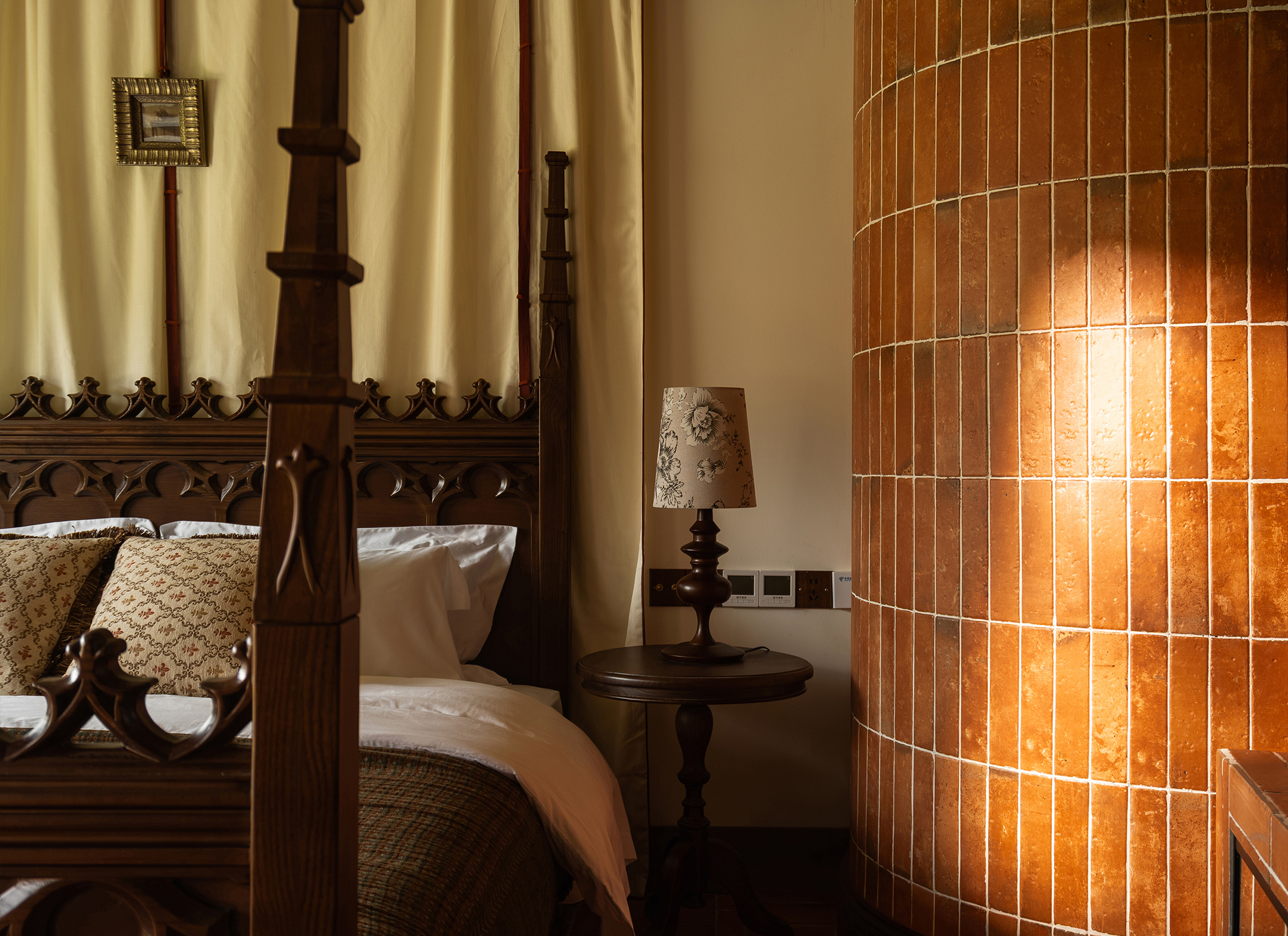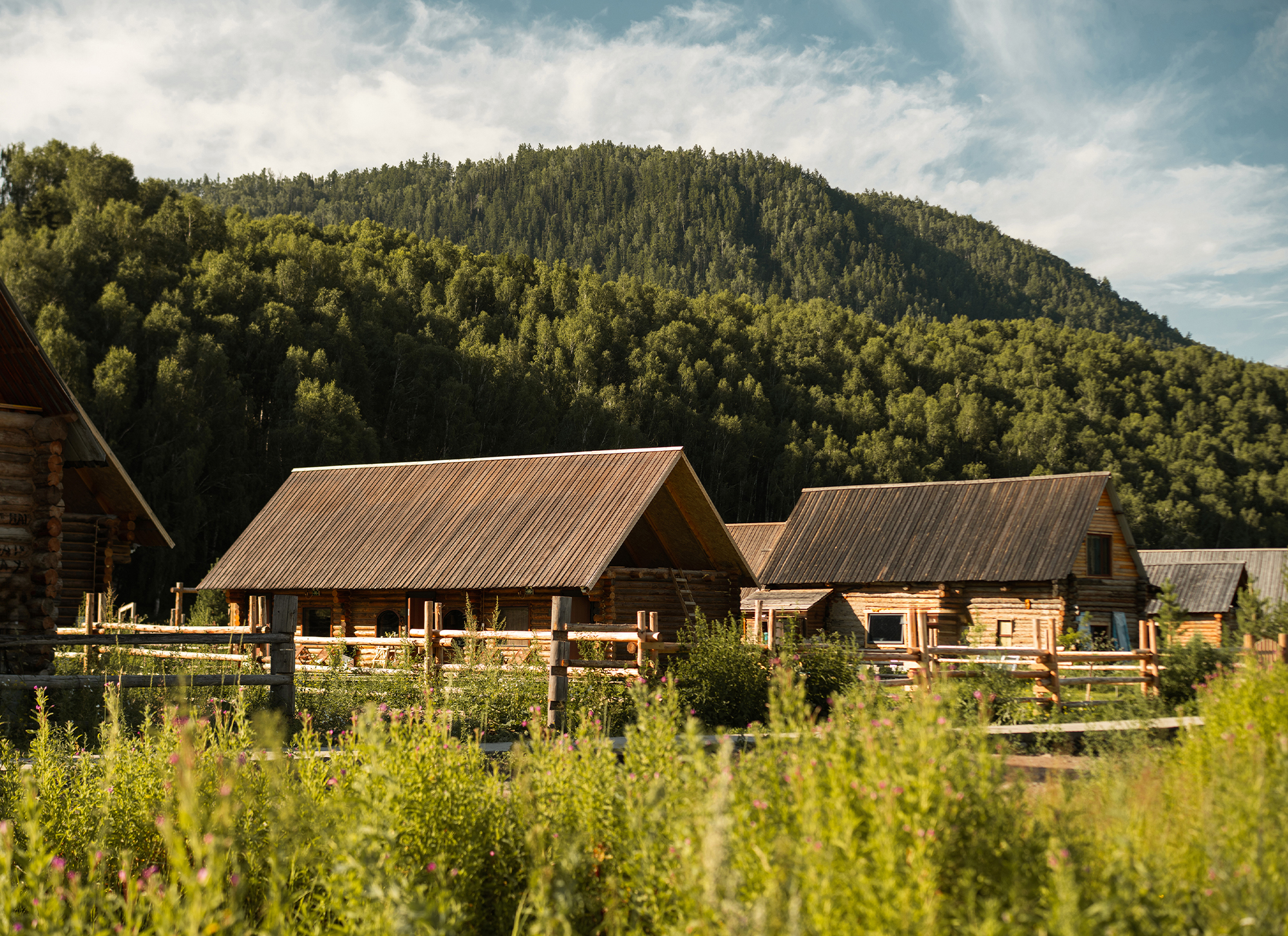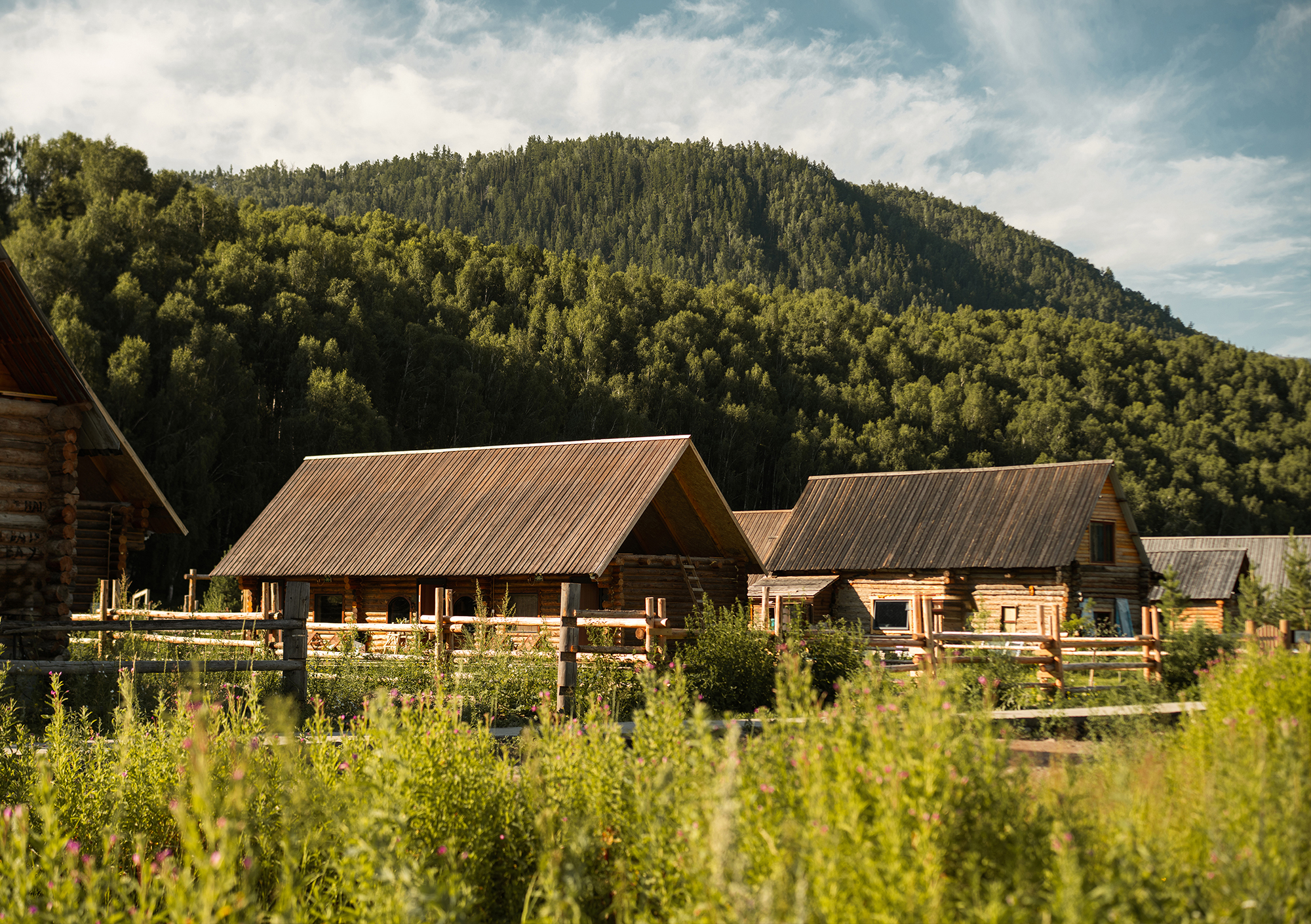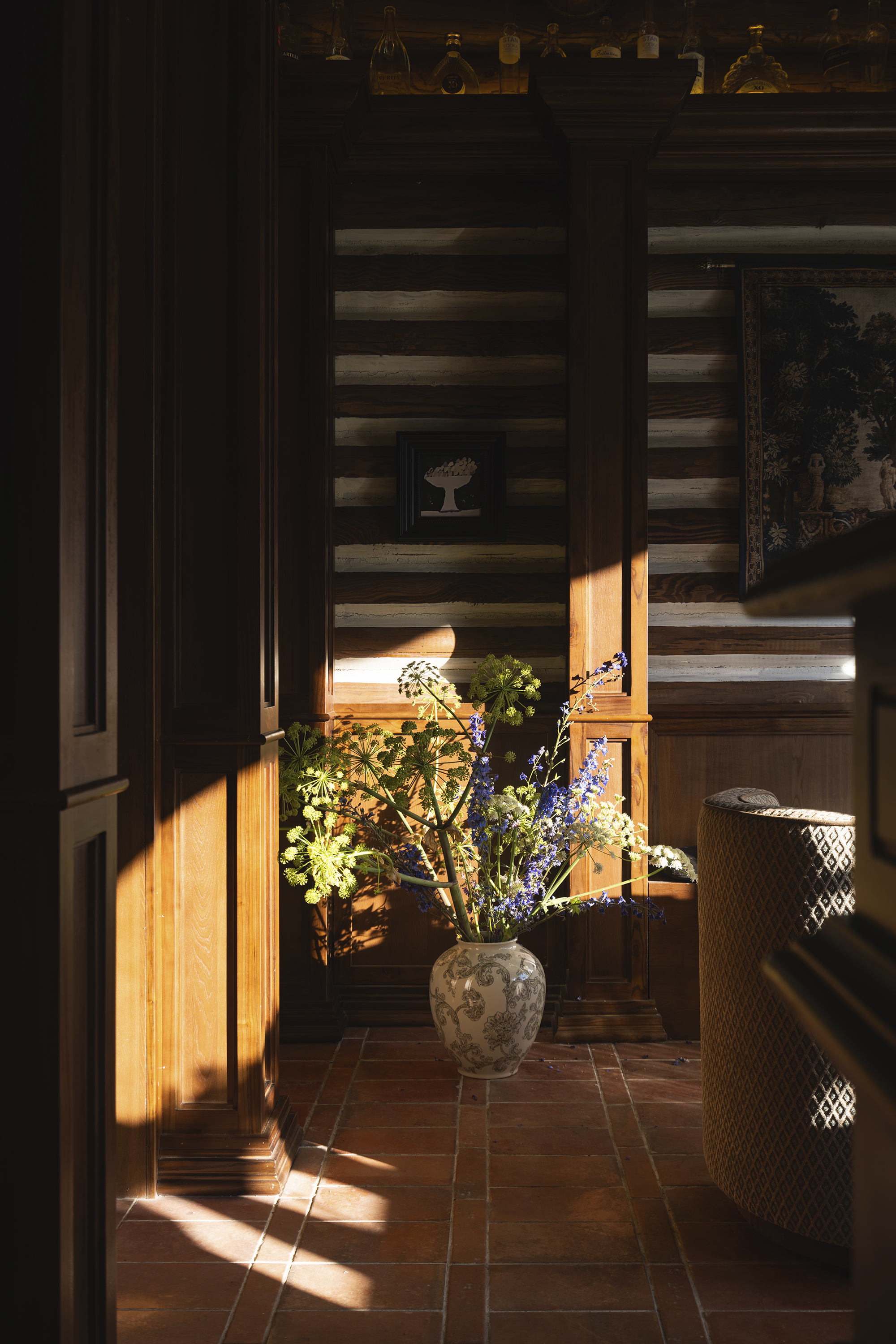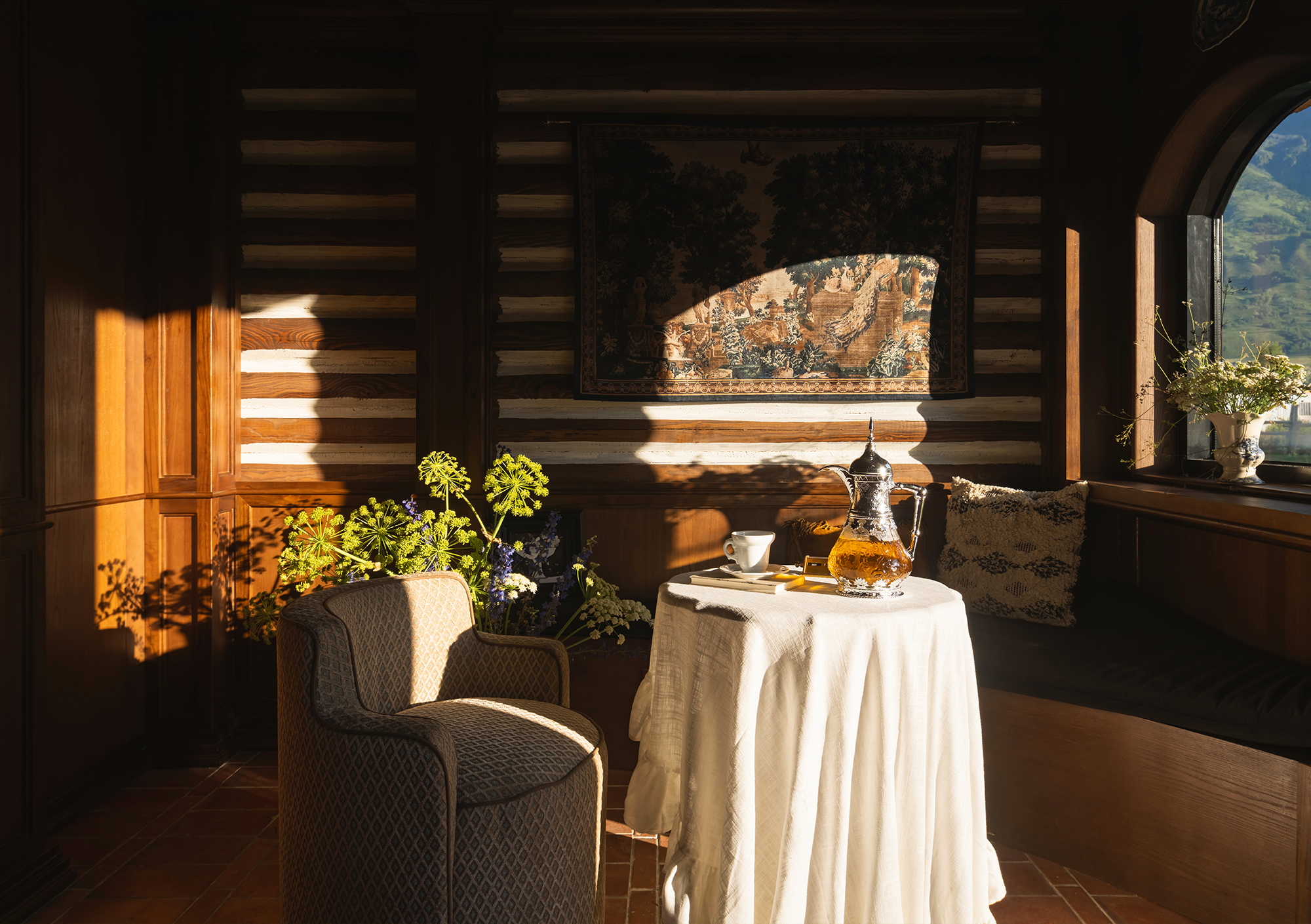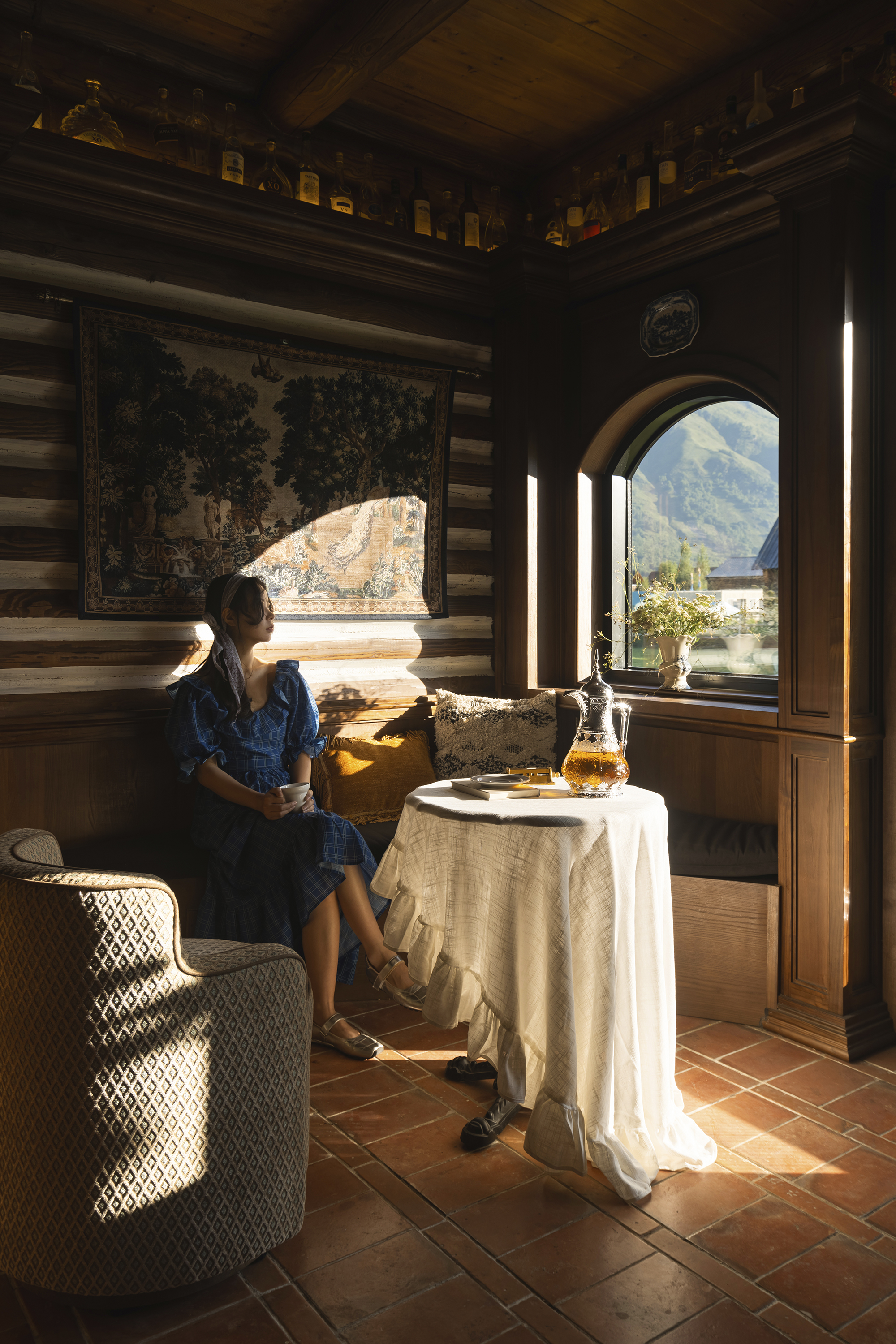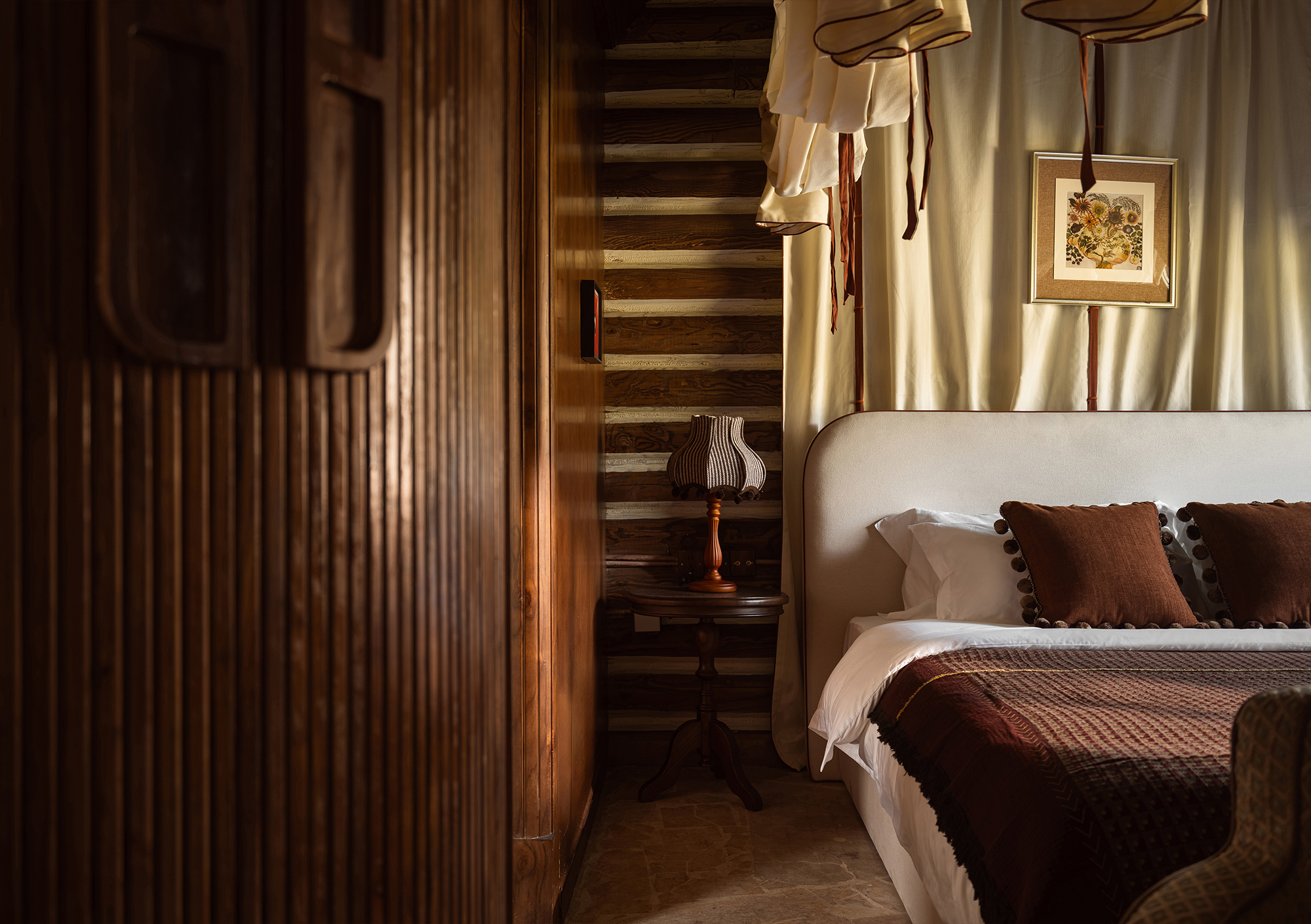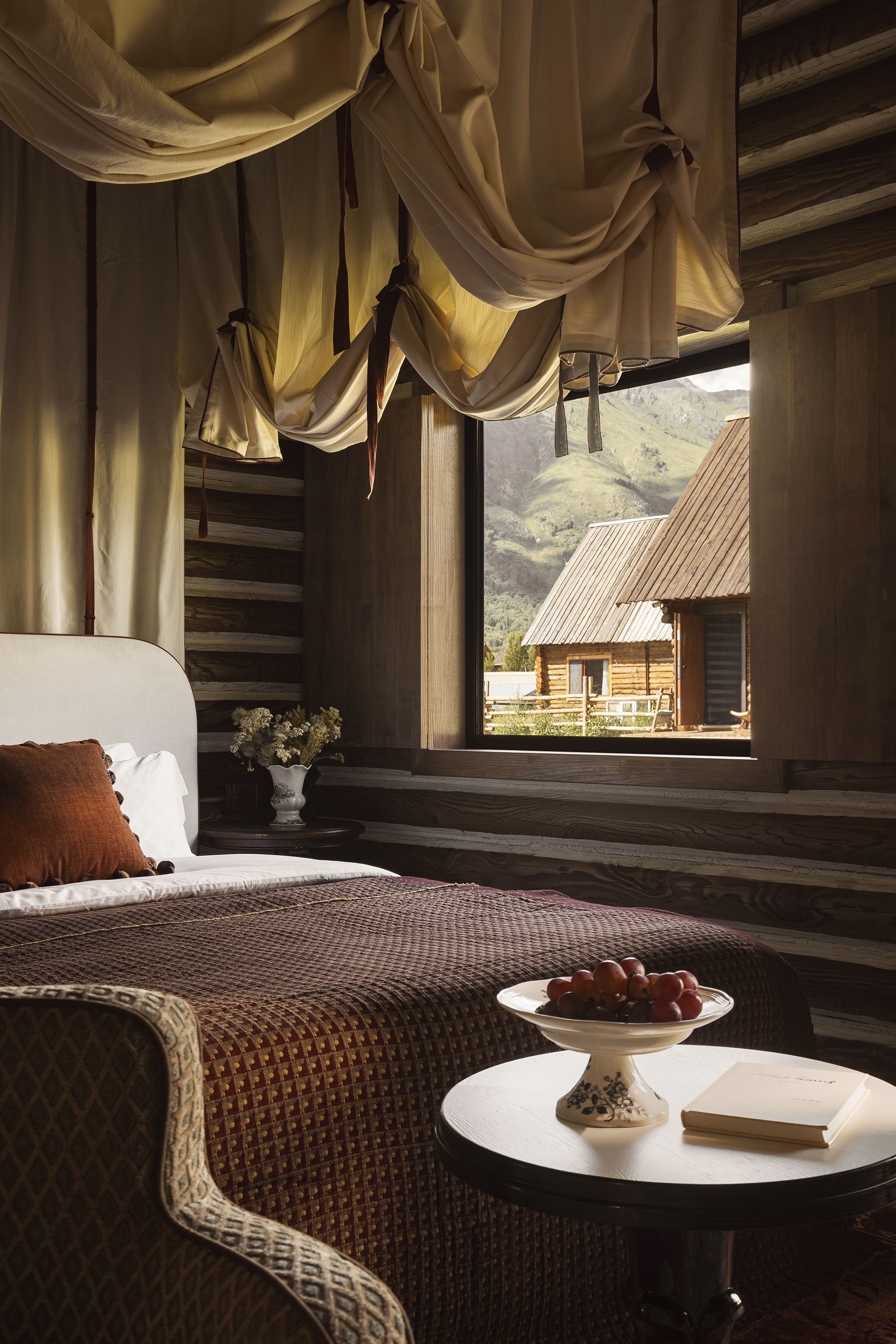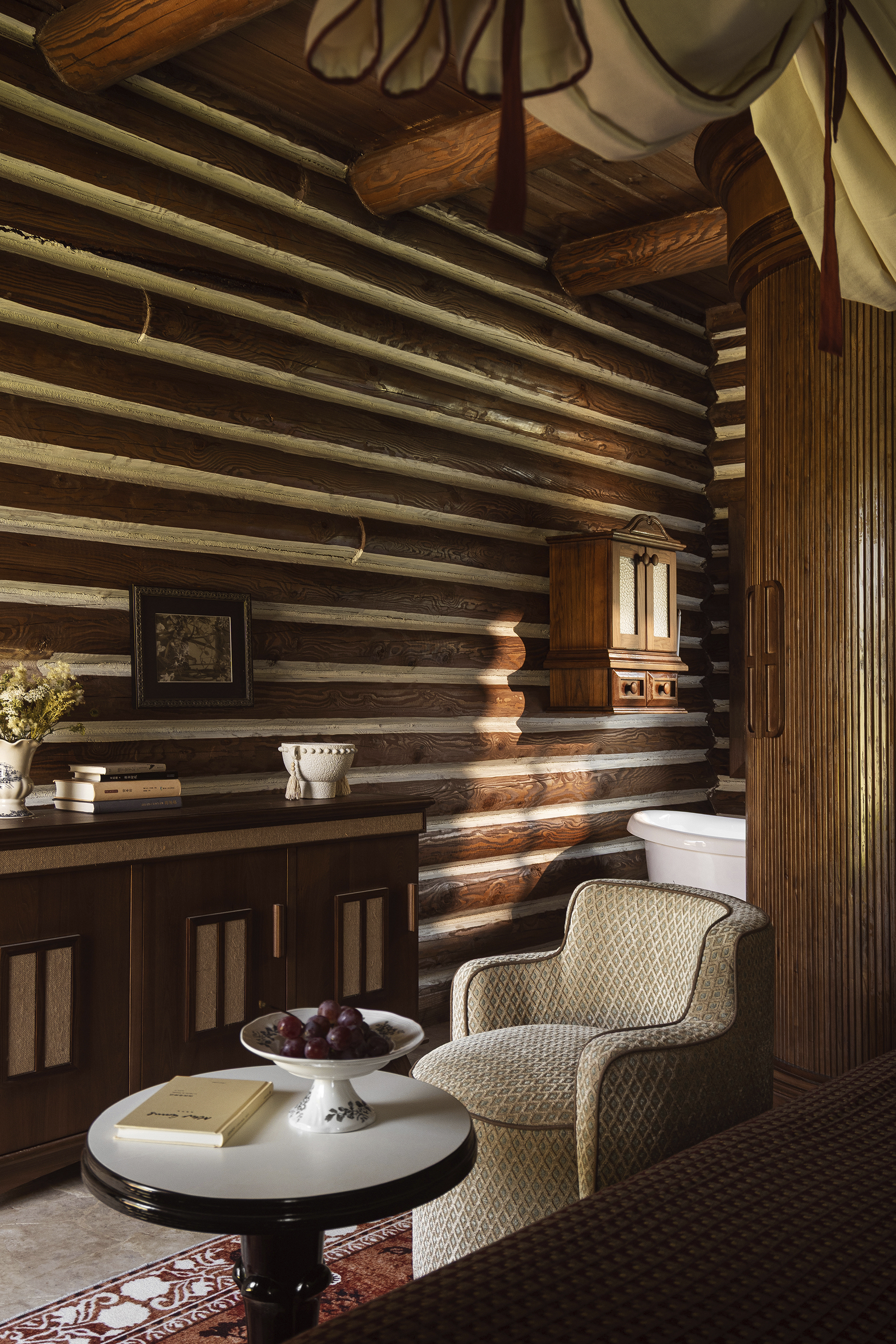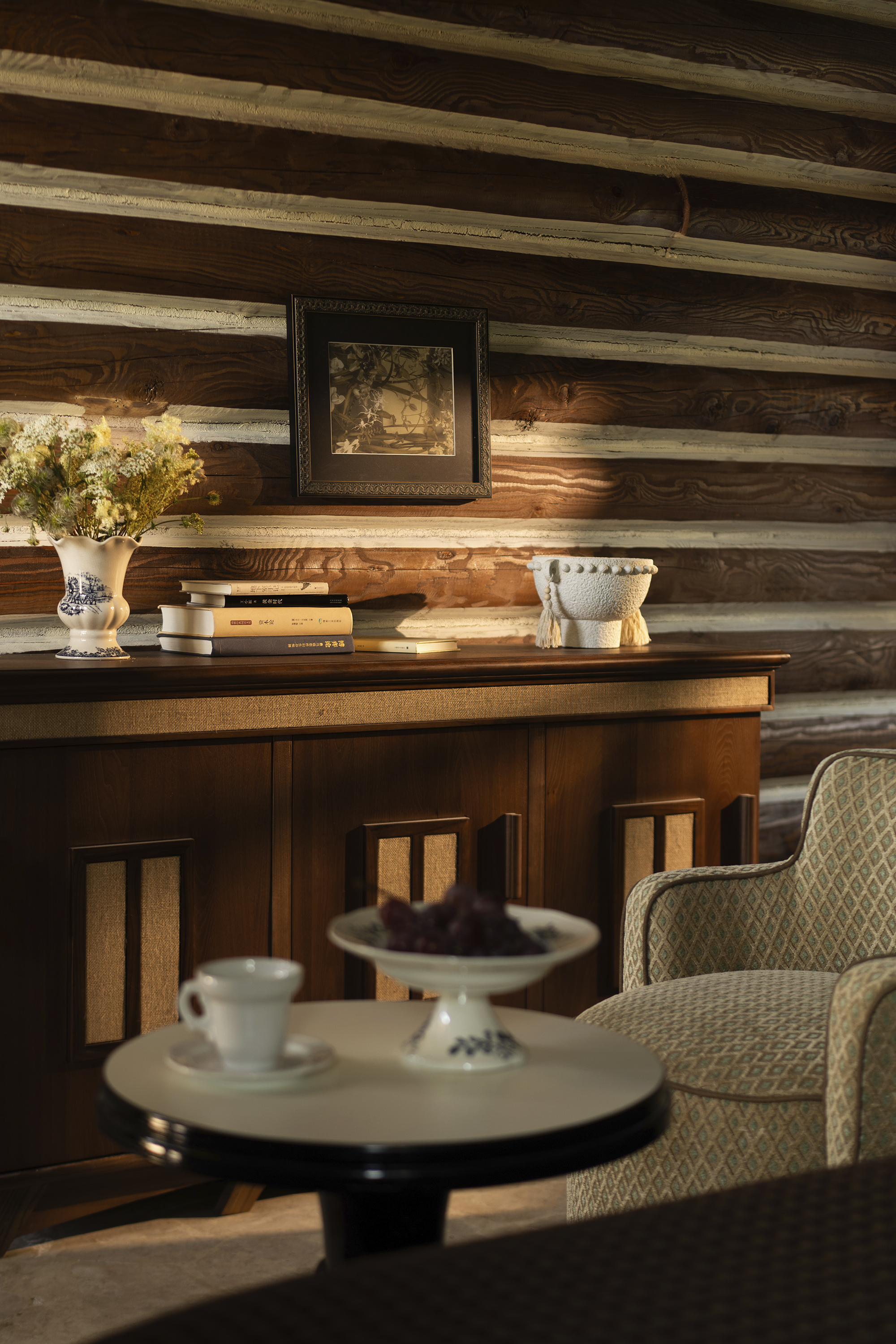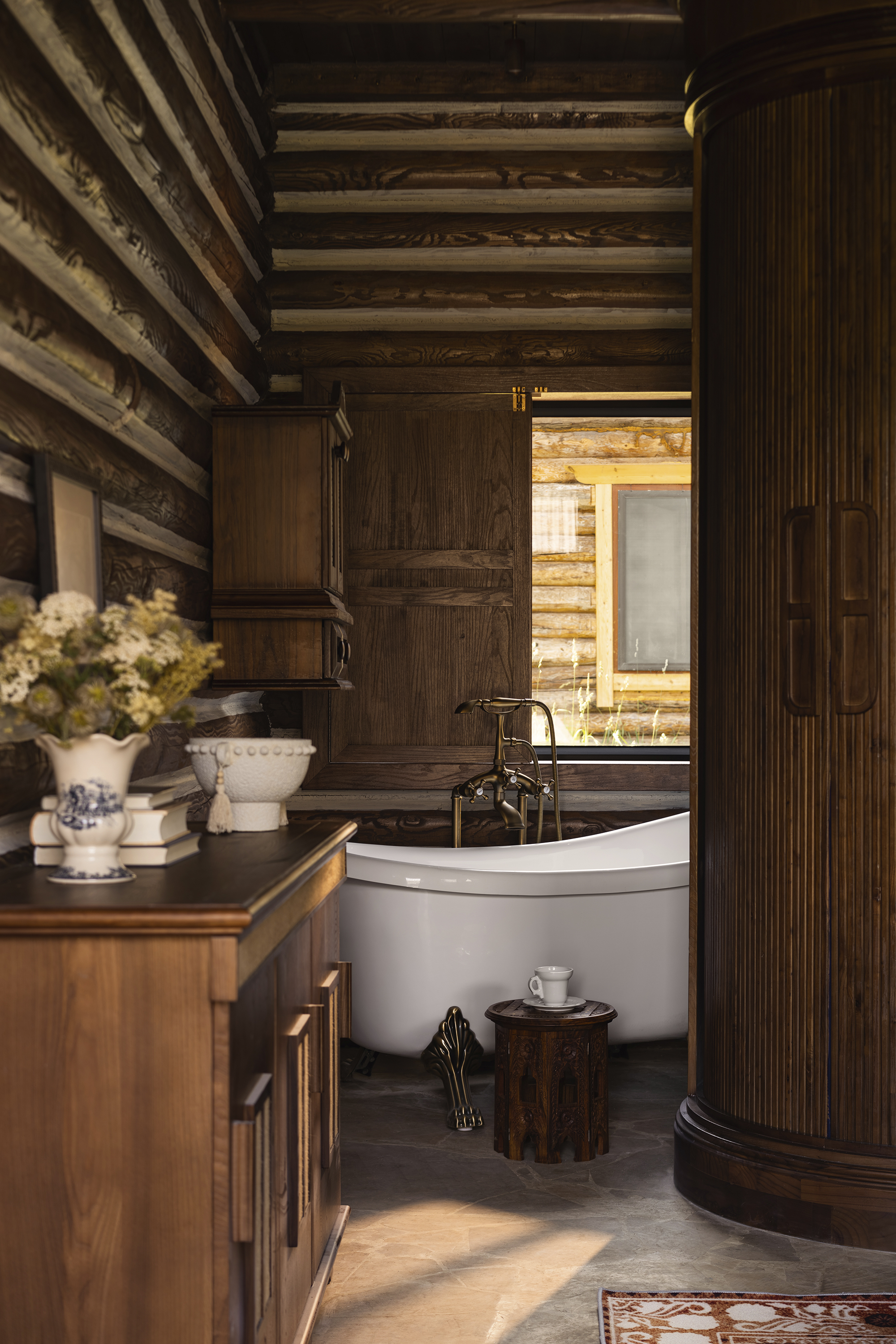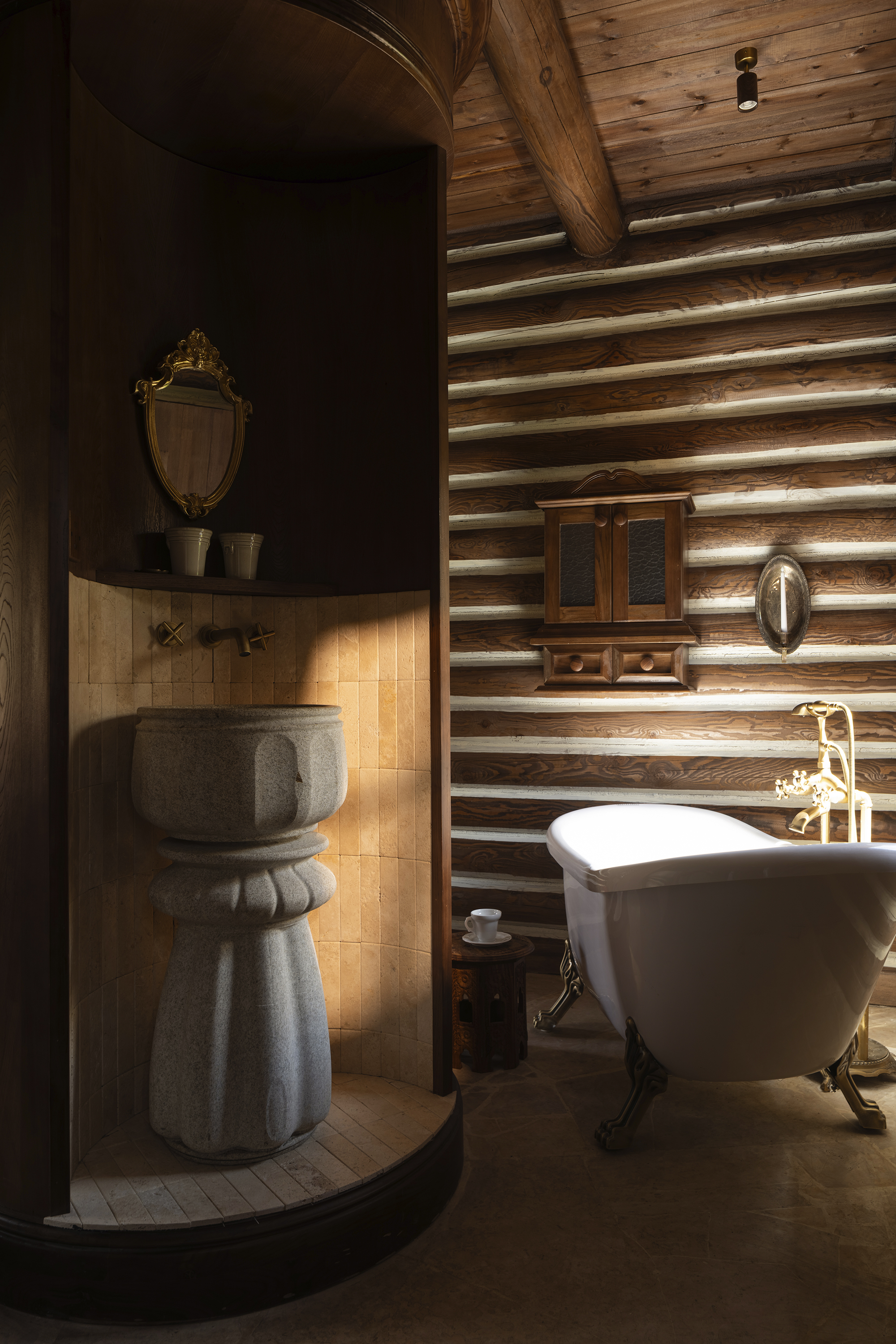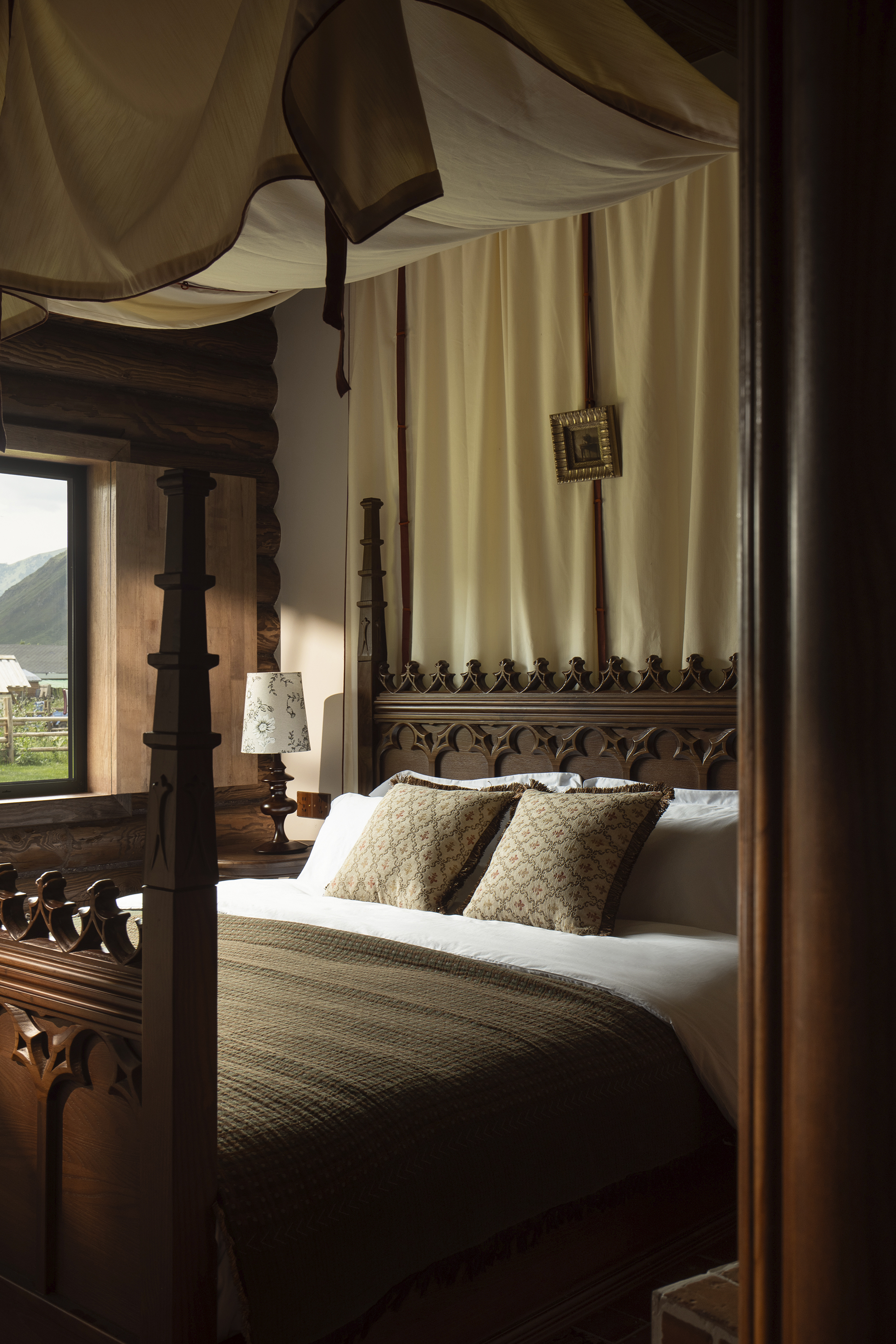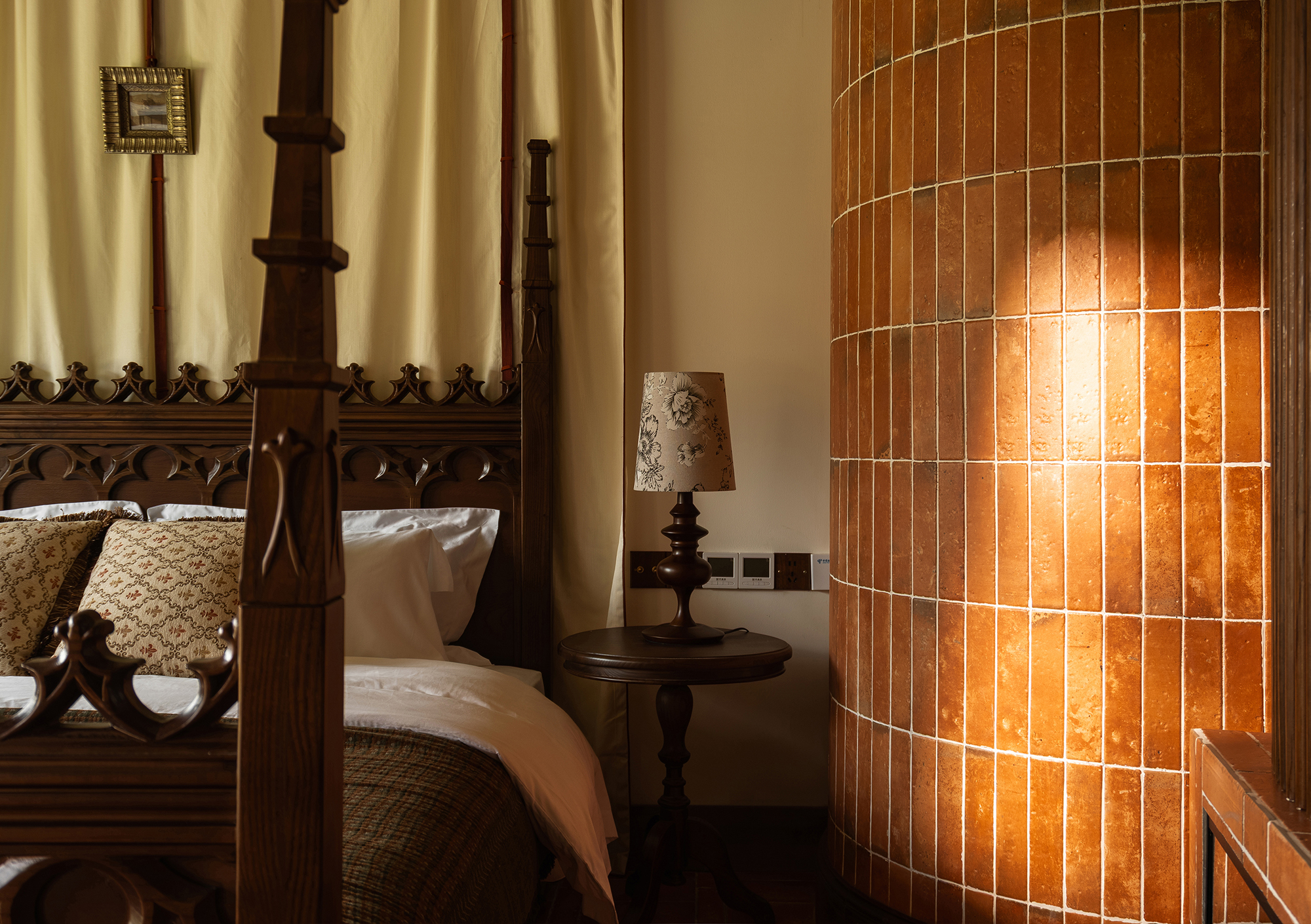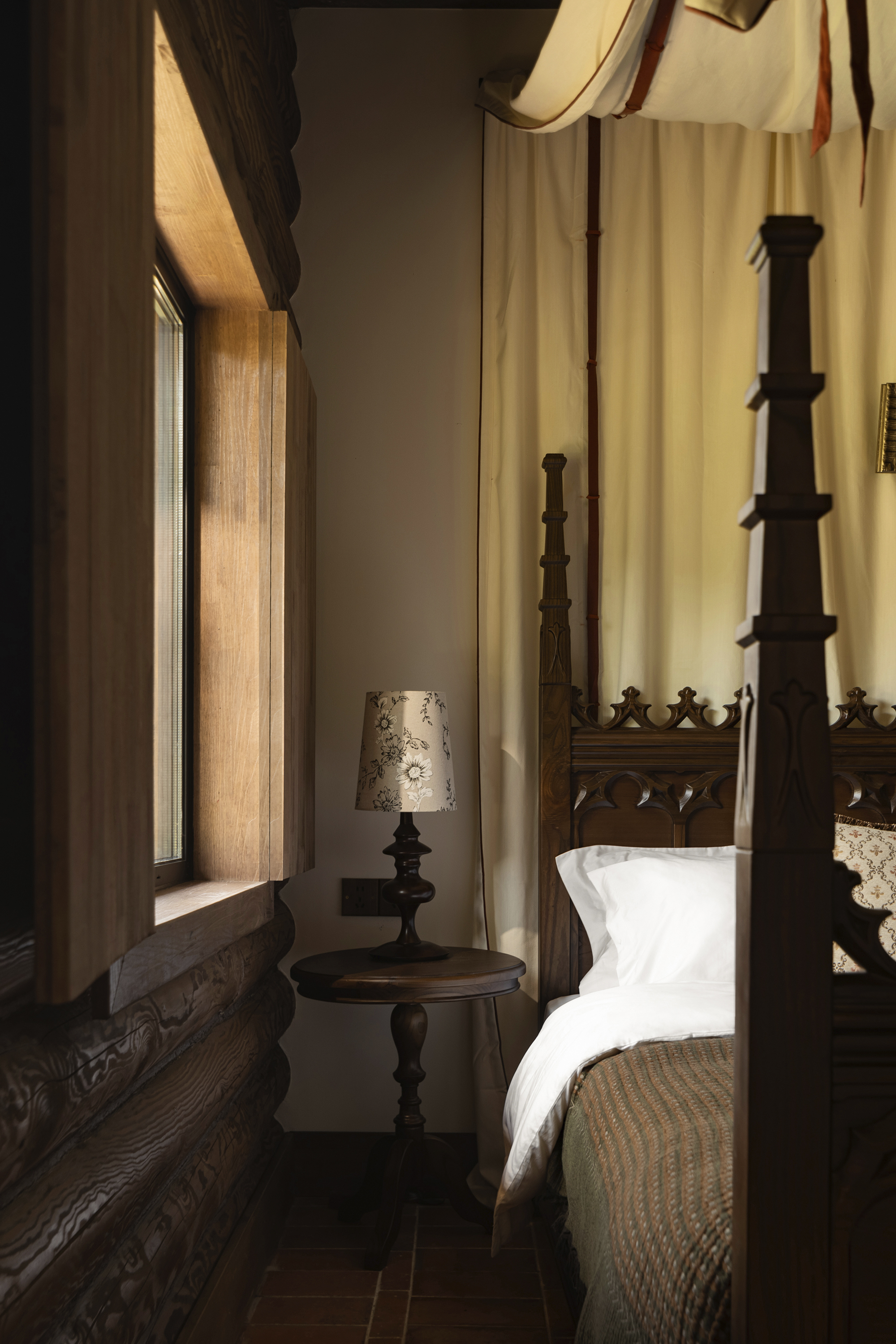The project is located in He Mu Village, Burqin County, Altay Prefecture, Xinjiang. It is one of the only three remaining Tuva villages in China. The buildings follow the local construction methods and mainly use high-strength, well-insulated and highly weather-resistant Siberian larch logs for construction. The buildings restore the local characteristics and blend in with the environment.
The total floor area of the project is relatively small, divided into 6 rooms and a reception hall. The area of each room is controlled at around 20 square meters. Under the limit of the room area, the design made its first attempt to separate the hotel bathroom and some basic functions, combining them into furniture for factory production and on-site assembly, reducing the difficulty of local construction. And the rich display of furniture can make the space more atmospheric.
